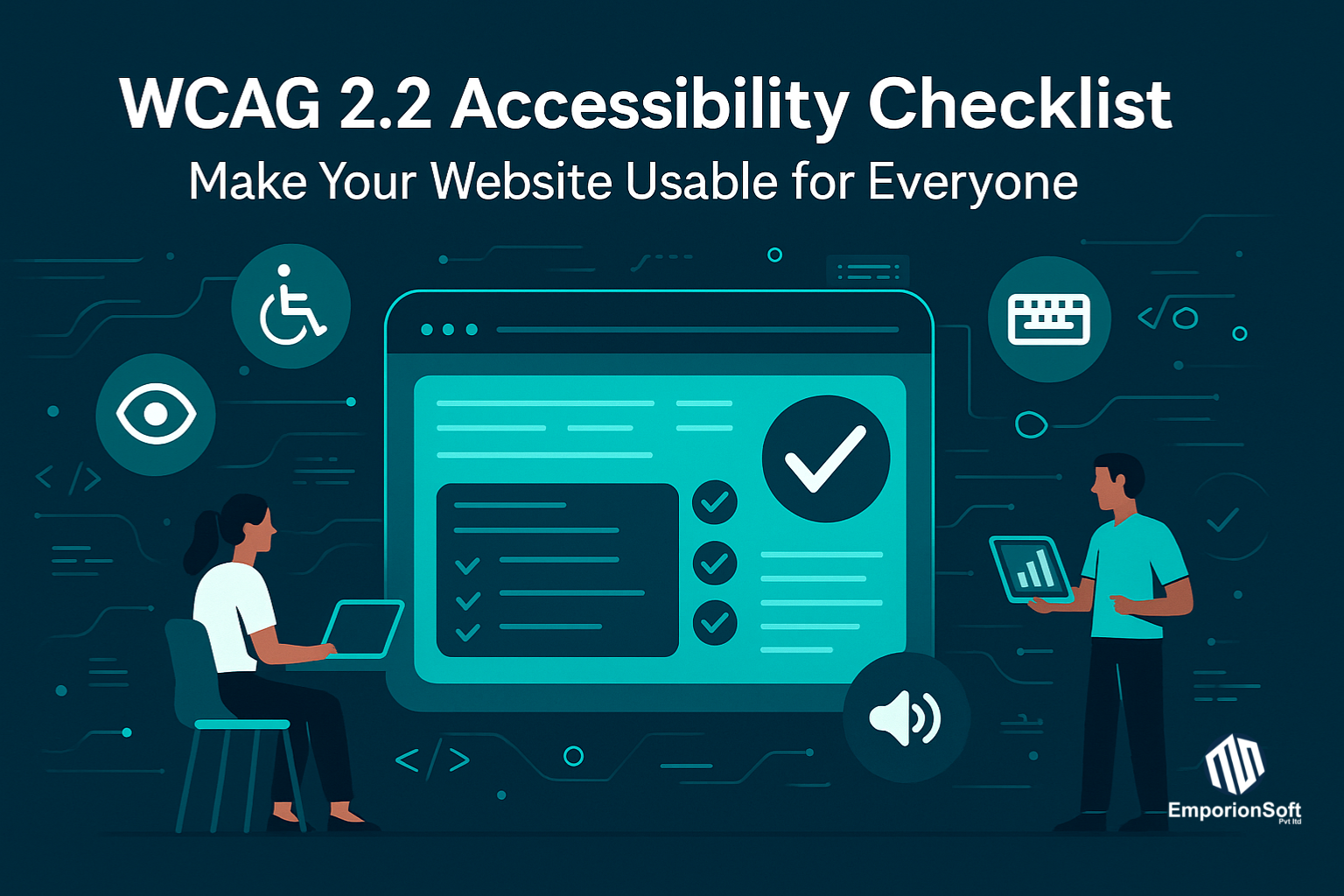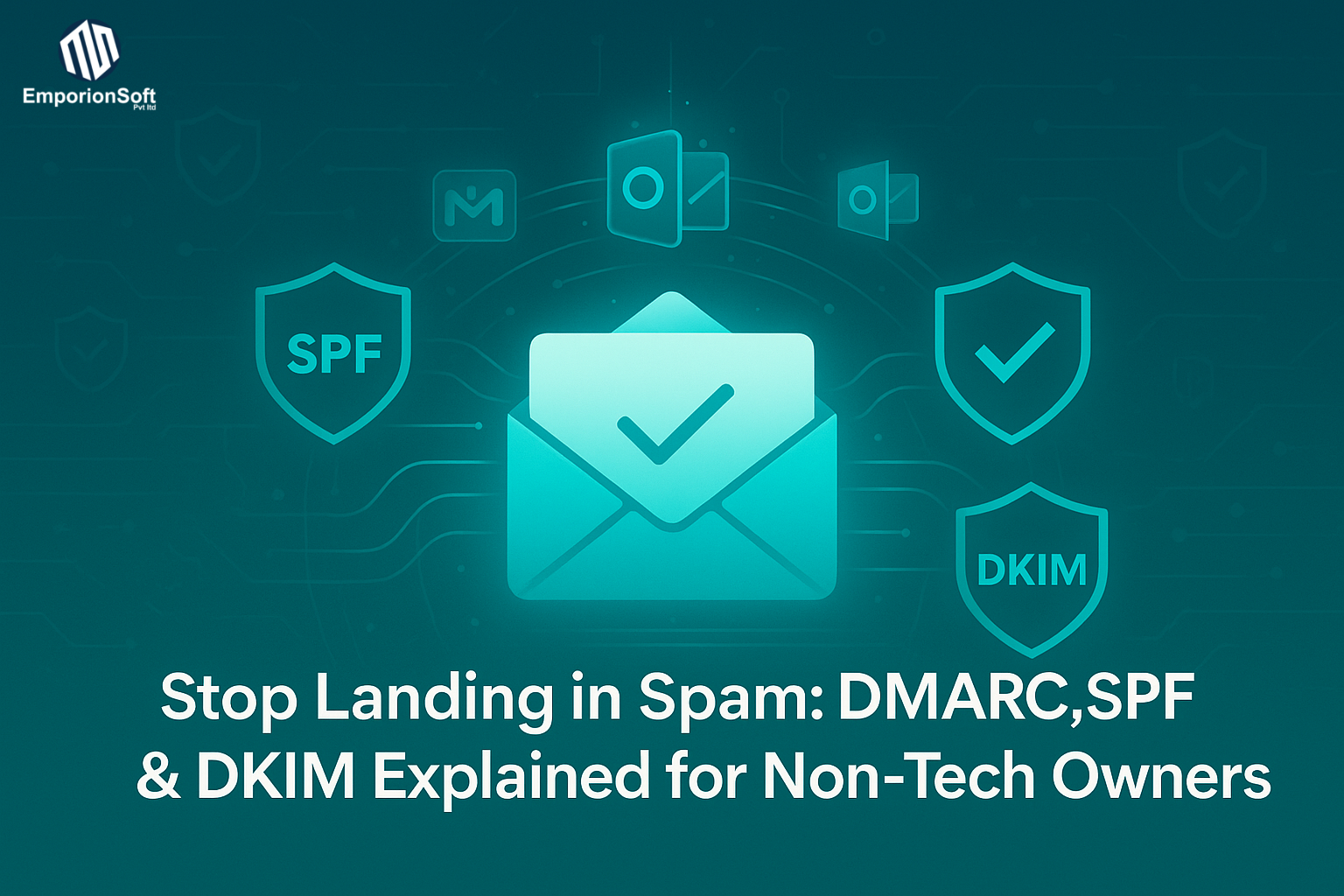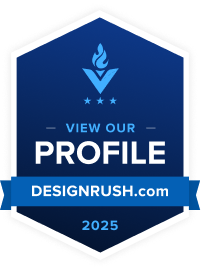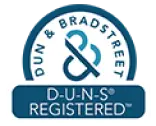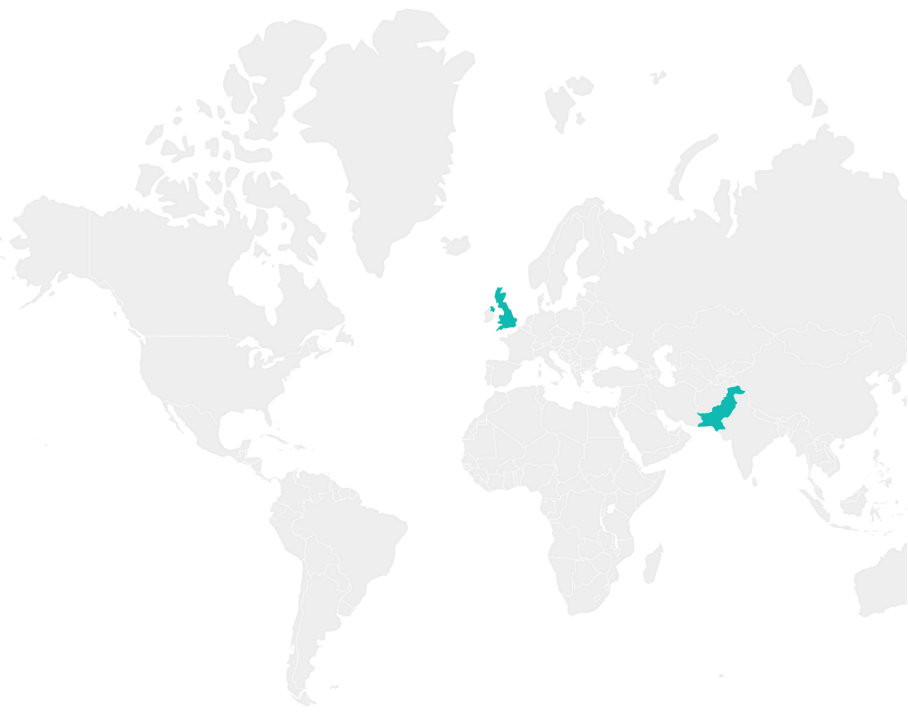WCAG 2.2 Accessibility Checklist: Why Inclusive Design Is No Longer Optional
In today’s digital-first world, accessibility is not a luxury — it’s a legal, ethical, and competitive necessity. Governments across the UK, Europe, and beyond are enforcing strict digital accessibility laws, and major brands have faced public backlash and lawsuits for overlooking inclusive design. From e-commerce platforms to SaaS dashboards, the message is clear: if your website isn’t usable by everyone, it’s not truly complete.
What Is WCAG and Why It Matters
The Web Content Accessibility Guidelines (WCAG) are the globally recognised standards for creating accessible websites, applications, and digital content. Developed and maintained by the World Wide Web Consortium (W3C) — the same body that shapes core web technologies — these guidelines provide a structured approach to ensuring that people with disabilities can perceive, understand, navigate, and interact with the web effectively.
WCAG was first introduced in 1999, evolving through several major versions to adapt to new technologies and user needs. The latest version, Web Content Accessibility Guidelines (WCAG) 2.2, builds upon WCAG 2.1, adding new success criteria focused on mobility, cognition, and input accessibility. In simpler terms, WCAG 2.2 ensures that every user, regardless of device, ability, or context, can experience the web without barriers.
From 2.1 to 2.2: A Meaningful Evolution
While WCAG 2.1 improved accessibility for mobile devices and low-vision users, WCAG 2.2 goes further. It introduces nine new success criteria designed to improve accessibility for users with cognitive disabilities and those relying on alternative input methods. Enhancements include guidelines for focus indicators, drag-and-drop functionality, and touch targets — small but vital changes that directly impact real-world usability.
For developers and designers, understanding and applying these new principles through a structured WCAG 2.2 accessibility checklist is essential. This checklist acts as a roadmap to compliance, helping teams align their websites and apps with international accessibility standards.
Why WCAG 2.2 AA Compliance Is Critical for Your Website
Most organisations aim to meet WCAG 2.2 Level AA — the standard benchmark for accessibility compliance across industries. This level ensures that content is accessible to the majority of users without requiring highly specialised assistive technology.
Beyond compliance, accessibility drives measurable business results:
-
Broader reach: Millions of users with visual, hearing, motor, or cognitive impairments gain access to your platform.
-
Improved SEO: Search engines reward accessible sites that follow structured, semantic content practices.
-
Enhanced reputation: Accessibility demonstrates corporate responsibility and inclusivity, building customer trust.
Adhering to the WCAG Checklist 2.1 AA and 2.2 AA also reduces the risk of costly legal disputes and regulatory penalties — issues increasingly common in sectors like e-commerce, finance, and education.
EmporionSoft’s Commitment to Inclusive Digital Experiences
At EmporionSoft Pvt Ltd, we believe accessibility is fundamental to building ethical, future-ready digital solutions. Our team ensures every project — from enterprise applications to public-facing websites — adheres to the highest accessibility standards.
By following the WCAG 2.2 accessibility checklist, our experts help clients create platforms that are not only compliant but also intuitive, inclusive, and user-centred. Whether you’re developing a new platform or retrofitting an existing one, accessibility should be part of your development strategy from the start — not an afterthought.
For further guidance, consult the official W3C Web Accessibility Initiative (WAI) for detailed information on the evolving standards.
Understanding WCAG 2.2: The Structure Behind an Accessible Web
Creating an inclusive digital experience starts with understanding the foundation of accessibility itself — the Web Content Accessibility Guidelines (WCAG) 2.2. These guidelines, built on four fundamental principles, form the backbone of accessible web design and development. By adhering to these standards, businesses can ensure that their websites are not only compliant but genuinely usable by everyone.
The Four Core Principles of WCAG 2.2 (POUR)
At the heart of WCAG lies the POUR framework — an acronym representing the four key principles that guide accessible content creation. Each principle defines how users with varying abilities can effectively engage with online content.
1. Perceivable — Information Must Be Presentable to All Senses
Content should be perceivable by all users, regardless of their sensory abilities. This means providing text alternatives for non-text content, captions for multimedia, and ensuring colour contrast is sufficient for readability. If users can’t perceive your content, they can’t interact with it — making this the first pillar of accessibility.
2. Operable — Functionality Must Be Usable by Everyone
Every interactive element — from navigation menus to form inputs — must be operable by a range of input methods. For example, users should be able to navigate via keyboard alone, pause motion content, and easily identify which element currently has focus. WCAG 2.2 further strengthens this principle through success criteria such as Focus Not Obscured and Dragging Movements.
3. Understandable — Information and Operation Must Be Clear
Even the most accessible interface fails if users can’t understand how it works. Websites should maintain predictable layouts, clear instructions, and consistent navigation. Error messages should guide users to correct mistakes easily — particularly in forms or checkout processes.
4. Robust — Content Must Be Compatible with Assistive Technologies
A robust website can be interpreted reliably by screen readers, voice controls, and future assistive technologies. Proper HTML structure, ARIA labels, and consistent semantics ensure that assistive devices can read, interpret, and interact with content accurately.
For developers, designers, and testers, the WebAIM’s WCAG 2 Checklist offers a simplified, practical reference for implementing each of these principles effectively.
Understanding WCAG Conformance Levels (A, AA, AAA)
The WCAG standards are divided into three conformance levels — each representing a deeper commitment to accessibility.
-
Level A: The most basic level, addressing critical barriers to access. Websites that fail Level A are generally unusable for many users with disabilities.
-
Level AA: The most widely adopted standard, balancing usability, compliance, and practicality. This level ensures accessibility for most users, including those with visual, auditory, and motor impairments.
-
Level AAA: The highest level, providing an exceptional accessibility experience. However, it’s not always feasible for all types of content or business models.
Most organisations aim for WCAG 2.2 AA compliance, as it aligns with both legal requirements and user experience best practices. It strikes the right balance between comprehensive accessibility and sustainable implementation. For an overview, refer to “WCAG 2.2 AA: Summary and Checklist for Website Owners” — a valuable resource that simplifies complex requirements into actionable steps.
What’s New in WCAG 2.2: Key Success Criteria
Version 2.2 builds on WCAG 2.1 by introducing nine new success criteria, primarily focused on improving usability for people with cognitive and motor disabilities. Some of the most impactful include:
-
Dragging Movements (2.5.7): Ensures users can perform actions without complex drag gestures, allowing alternatives like simple clicks or taps.
-
Focus Not Obscured (2.4.11): Requires visible focus indicators that are never hidden by pop-ups or overlapping elements, improving keyboard navigation.
-
Target Size (Minimum) (2.5.8): Mandates adequate size and spacing for interactive elements, reducing accidental clicks on small or closely spaced buttons.
-
Accessible Authentication (3.3.7): Promotes login processes that don’t rely solely on cognitive tests like CAPTCHA or memory-based challenges.
These refinements make WCAG 2.2 particularly valuable in modern digital contexts — especially as touch interfaces, AI-driven forms, and responsive designs become standard.
Accessibility, Ethics, and Future-Ready Infrastructure
Implementing accessibility is not just a compliance exercise — it’s an ethical commitment to fairness and inclusion. Businesses that embed these principles from the start reflect integrity and user empathy, values closely tied to ethical AI practices and future-ready digital infrastructure.
Accessibility also aligns with the evolving landscape of cloud computing and modern software scalability — where inclusivity, security, and adaptability work hand in hand to shape sustainable growth.
A Quick Reference for Implementation
For teams seeking a concise guide on practical steps, “How to Meet WCAG (Quick Reference)” offers an excellent breakdown of each criterion, success level, and testing method. Combining this with internal design audits and professional consultation ensures that your digital products stay compliant — and more importantly, truly inclusive.
The Business and Legal Case for Accessibility Compliance
In an era where digital presence defines brand credibility, accessibility is no longer just an ethical consideration — it’s a business and legal imperative. The WCAG 2.2 accessibility checklist not only ensures inclusivity but also protects organisations from growing legal scrutiny while boosting overall digital performance. Forward-thinking companies now see accessibility as a strategic advantage — one that directly impacts revenue, SEO, and customer loyalty.
Accessibility as a Legal Obligation
Across the globe, digital accessibility is being codified into law. In the UK, the Equality Act 2010 mandates that businesses must ensure their online services are accessible to people with disabilities. Similarly, in the United States, the Americans with Disabilities Act (ADA) extends accessibility obligations to websites and mobile apps, treating them as public spaces.
Non-compliance carries heavy risks. Numerous high-profile lawsuits have been filed against companies whose websites excluded users with disabilities. Retailers, educational institutions, and even government portals have faced financial penalties and reputational damage for failing to meet accessibility standards.
By adopting the Web Accessibility Checklist, Based on WCAG 2.2 AA, businesses can proactively ensure compliance, avoiding legal exposure while strengthening trust among users and regulators alike.
According to the UK Government Digital Service Accessibility Guidance, every public-facing website must meet WCAG 2.1 AA standards — a requirement expected to evolve to WCAG 2.2 in the near future. Staying ahead of compliance not only demonstrates responsibility but also positions brands as leaders in ethical digital practices.
The SEO Advantage of Accessibility
Accessibility and SEO go hand in hand. Search engines like Google reward websites that follow structured content principles — many of which overlap directly with WCAG guidelines.
For example:
-
Providing alt text for images improves accessibility for screen readers and boosts image search rankings.
-
Using semantic HTML elements like
<header>,<nav>, and<article>enhances both assistive technology compatibility and crawler understanding. -
Ensuring mobile and keyboard accessibility leads to better Core Web Vitals performance, improving overall page experience scores.
A site optimised through the WCAG Checklist – Free and simple guides to WCAG 2.2 inherently becomes more discoverable, faster, and user-friendly — leading to higher traffic and stronger engagement metrics.
Accessibility Builds Retention and Brand Loyalty
Beyond rankings and compliance, accessibility improves the experience for all users. Features like readable typography, predictable navigation, and clear contrast ratios make content easier to consume — whether you’re using assistive technology, browsing on a mobile device, or navigating in low light.
Research supports this:
The 2024 WebAIM Million Report found that over 96% of home pages still have detectable accessibility errors, leaving millions of users excluded from full participation in the digital world.
This staggering figure highlights a market gap — and an opportunity. Companies that invest in accessible experiences can tap into a broader audience, improve customer satisfaction, and stand apart as champions of inclusion.
By building with accessibility from day one, organisations reduce friction in user journeys, minimise bounce rates, and cultivate long-term loyalty.
Cost Savings Through Early Accessibility Integration
Fixing accessibility issues after launch can be costly. A reactive approach often leads to extended testing cycles, design overhauls, and patchwork fixes that disrupt scalability. In contrast, integrating accessibility during design and development ensures efficiency, lowers technical debt, and reduces rework.
For digital transformation and software projects, accessibility aligns naturally with resilient development principles. For instance, in EmporionSoft’s guide on building resilient software and disaster recovery strategies, proactive planning is key — and the same applies to accessibility.
Similarly, strong project management processes (as explored in EmporionSoft’s tools for tech companies) help embed accessibility milestones across sprints, ensuring accountability and measurable progress.
A Competitive Advantage for the Modern Web
Accessibility is no longer just a compliance checkbox — it’s a mark of innovation. Businesses that embrace the Web Accessibility Checklist, Based on WCAG 2.2 AA future-proof their platforms, reduce risk, and create a more inclusive online experience that aligns with user expectations and global ethical standards.
In a world increasingly defined by trust and transparency, accessible design doesn’t just protect your business — it amplifies it.
For detailed implementation advice, businesses can explore the UK Government Digital Service’s accessibility framework or use WebAIM’s resources to integrate accessibility testing seamlessly into their workflow.
WCAG 2.2 AA Checklist: A Practical, Actionable Guide for Every Website
Achieving accessibility doesn’t have to be overwhelming. The WCAG 2.2 accessibility checklist provides a clear roadmap that web designers, developers, and content creators can follow to ensure that digital experiences are inclusive and compliant. Below is a simplified, actionable breakdown — based on the WCAG Checklist: A Simplified Guide to WCAG 2.2 AA and insights from WebAIM’s WCAG 2 Checklist — covering the four foundational principles: Perceivable, Operable, Understandable, and Robust.
Each section includes practical guidance and highlights what’s new in WCAG 2.2, helping you transform accessibility from a compliance task into a design standard.
1. Perceivable — Make Content Visible and Understandable to All
Your website’s information should be presented in ways that all users can perceive, regardless of visual, auditory, or cognitive ability.
Actionable items:
-
Provide text alternatives (
altattributes) for all non-text content, including images, charts, and icons. -
Add captions and transcripts for videos and audio files to support users with hearing impairments.
-
Ensure sufficient colour contrast between text and background (minimum ratio 4.5:1 for normal text).
-
Allow adaptable layouts, so users can resize text or use screen magnifiers without losing content or functionality.
-
Avoid using colour alone to convey information — always pair it with a label or symbol.
New in WCAG 2.2:
-
Improved support for low-vision users by refining colour contrast and focus visibility criteria.
-
Expanded guidance for non-text alternatives, ensuring adaptable design for new device types and AR/VR contexts.
Accessible, perceivable design is not just good practice — it’s good business. EmporionSoft integrates these principles in all web development and software design services to ensure that accessibility starts at the foundation.
2. Operable — Ensure Functionality for Everyone
Every user must be able to navigate and interact with your website using their preferred input method — whether that’s a keyboard, touchscreen, or assistive device.
Actionable items:
-
Keyboard Accessibility: All functionality must be available via keyboard navigation without requiring a mouse.
-
Visible Focus Indicators: Ensure that links and buttons show a clear visual outline when selected.
-
Time Limits: Give users options to extend or disable time limits on forms or dynamic content.
-
Avoid Content That Triggers Seizures: Don’t use flashing content exceeding three flashes per second.
-
Provide Skip Links: Allow users to bypass repetitive navigation sections.
New in WCAG 2.2:
-
Focus Not Obscured (2.4.11): The focused element must remain visible even when overlays or sticky headers are present.
-
Dragging Movements (2.5.7): Actions should have alternatives to dragging (e.g., tap or click).
-
Target Size (Minimum) (2.5.8): Interactive elements like buttons and icons must meet a minimum target size of 24×24 pixels for easier touch input.
These updates enhance usability for mobile and touch users, improving accessibility and overall user experience.
3. Understandable — Create Predictable, Readable, and Consistent Experiences
A website should be easy to read, intuitive to navigate, and predictable in behaviour. This helps users of all literacy levels and cognitive abilities.
Actionable items:
-
Readable Text: Use simple language and consistent terminology. Avoid unnecessary jargon.
-
Predictable Navigation: Keep menu structures and layouts consistent across all pages.
-
Clear Labels and Instructions: Ensure form fields, buttons, and links have descriptive names.
-
Error Prevention and Feedback: Provide clear error messages and suggestions for correction.
-
Avoid unexpected changes: Actions like submitting forms or opening new windows should not occur without user awareness.
New in WCAG 2.2:
-
Accessible Authentication (3.3.7): Avoid login systems that rely solely on memory or cognitive tasks. Provide password managers, copy-paste support, or alternative authentication methods like biometric login.
These practices not only make websites more accessible but also reduce user frustration — key to higher conversions and retention.
4. Robust — Ensure Compatibility with Assistive Technologies
Accessibility is incomplete without robust technical implementation. Websites must work consistently across different browsers, operating systems, and assistive tools like screen readers.
Actionable items:
-
Use Semantic HTML: Elements such as
<header>,<main>, and<footer>provide structure that assistive tools can interpret. -
Implement ARIA Attributes Thoughtfully: Use ARIA labels, roles, and landmarks to improve screen reader compatibility.
-
Validate Code: Ensure HTML and ARIA syntax is valid to prevent misinterpretation.
-
Avoid Reliance on Specific Devices: Design with flexibility so content remains functional across platforms.
-
Test with Assistive Tools: Regularly test with screen readers (NVDA, JAWS, VoiceOver) and automated validators.
What’s New in 2.2:
While the robust principle remains largely unchanged, WCAG 2.2 strengthens interoperability with modern frameworks and emerging assistive technologies, promoting smoother integration with mobile and AI-driven interfaces.
Implementing the Checklist: A Streamlined Approach
To make this practical, the WCAG Checklist: A Simplified Guide to WCAG 2.2 AA divides accessibility testing into manageable phases:
-
Design Phase: Incorporate inclusive UI patterns and readable content structure.
-
Development Phase: Validate code, implement ARIA roles, and test focus order.
-
QA Phase: Use tools such as WAVE, Axe, or Lighthouse to identify compliance gaps.
-
Post-Launch: Gather feedback and perform periodic audits.
At EmporionSoft Pvt Ltd, we apply this structured approach to ensure that accessibility is woven into every development milestone — from concept to deployment.
For teams seeking expert guidance, WebAIM remains one of the most trusted authorities, offering free, detailed checklists and testing tools to help organisations stay compliant and user-centric.
Tools and Techniques to Evaluate WCAG 2.2 Compliance
Accessibility testing is no longer a one-time checkbox — it’s an ongoing commitment woven into the software development lifecycle. With the evolution of digital standards, tools now allow developers, QA teams, and designers to evaluate compliance efficiently, identify issues early, and maintain inclusive experiences at scale. Whether you’re following the WCAG Checklist 2.1 AA and 2.2 AA or referencing How to Meet WCAG (Quick Reference), a combination of automated and manual testing ensures accuracy, depth, and long-term compliance.
Automated Accessibility Testing Tools
Automated tools serve as the first line of defence in accessibility compliance. They rapidly scan pages, identify obvious violations, and generate reports aligned with the Web Content Accessibility Guidelines (WCAG) 2.2 framework. Here are some of the most widely used tools in modern web development:
1. WAVE (Web Accessibility Evaluation Tool)
Developed by WebAIM, WAVE provides a visual representation of accessibility issues directly on your web pages. It identifies missing alt text, colour contrast errors, heading structure issues, and ARIA implementation problems. WAVE’s browser extensions make it an ideal first step for developers and content managers testing live environments.
2. axe DevTools
Created by Deque Systems, axe DevTools is a professional-grade accessibility testing extension integrated into browser developer tools. It runs automated audits, categorises errors by severity, and provides step-by-step remediation guidance. Axe also offers premium enterprise integrations that fit seamlessly into developer workflows, ensuring continuous accessibility monitoring.
3. Lighthouse Accessibility Audit
Built into Google Chrome DevTools, Lighthouse audits pages against WCAG criteria and reports accessibility scores alongside SEO, performance, and best practices. Its accessibility audits are particularly useful for catching issues like insufficient contrast, missing form labels, or non-descriptive link text. When integrated into development environments, Lighthouse promotes a culture of accessible design from the start.
4. Pa11y and Accessibility Insights
For teams automating compliance testing, Pa11y provides a command-line interface to test large web projects, while Accessibility Insights by Microsoft offers guided manual and automated testing flows. Both tools help validate WCAG 2.1 AA and 2.2 AA conformance across complex applications.
Manual Testing: The Human Perspective
While automated tools are efficient, they typically catch only 30–40% of accessibility issues. Manual testing bridges that gap, providing real-world context and human validation.
Best practices for manual evaluation include:
-
Keyboard-only navigation: Ensures all interactive elements (buttons, menus, forms) are fully operable without a mouse.
-
Screen reader testing: Use NVDA, JAWS, or VoiceOver to confirm that content is properly announced and navigable.
-
Visual inspection: Check focus indicators, colour contrast, and responsive behaviour across devices.
-
Cognitive usability testing: Involve users with disabilities to provide authentic feedback on real-world accessibility barriers.
Deque University provides comprehensive training for professionals aiming to master both automated and manual testing, offering WCAG-aligned certifications and hands-on courses.
Integrating Accessibility into CI/CD Pipelines
To maintain compliance in fast-paced development environments, accessibility testing should be automated within Continuous Integration and Continuous Deployment (CI/CD) pipelines. This ensures that accessibility checks occur with every code commit, pull request, or deployment — preventing regressions before they reach production.
Here’s how teams can integrate accessibility testing effectively:
-
Embed automated testing tools (axe-core, Pa11y, Lighthouse CI) within build processes.
-
Set accessibility thresholds — failing a build if critical WCAG errors exceed a defined limit.
-
Automate reporting — export accessibility metrics to dashboards for continuous monitoring.
-
Schedule manual audits — perform deeper checks at major release milestones.
EmporionSoft’s experience in real-time AI-driven production systems demonstrates how automation and intelligence can co-exist to maintain performance and compliance simultaneously. Similarly, the principles of LLMOps for large-scale AI applications — monitoring, continuous evaluation, and optimisation — apply directly to accessibility assurance pipelines.
A Hybrid Approach to Sustainable Accessibility
The most effective strategy combines automation, manual testing, and AI-driven analysis to create a continuous feedback loop. By pairing automated tools like WAVE or axe DevTools with human insights and CI/CD integration, development teams can detect and resolve accessibility gaps early — ensuring alignment with both WCAG 2.1 AA and WCAG 2.2 AA standards.
For ongoing reference, WebAIM’s WCAG 2 Checklist and How to Meet WCAG (Quick Reference) remain essential companions for maintaining compliance, quality, and inclusivity across projects.
Designing Accessible Interfaces: Practical Strategies for Developers and UX Teams
Creating a beautiful interface is one thing — making it usable for everyone is another. Accessibility-driven design bridges this gap, ensuring that every visitor, regardless of ability or device, can interact with your website seamlessly. The Web Content Accessibility Guidelines (WCAG) 2.2 provide a clear framework for achieving this balance through smart design and development practices.
Whether you’re building an enterprise-grade platform or a mobile-first application, implementing the Web Accessibility Checklist, Based on WCAG 2.2 AA, helps create inclusive, future-ready digital experiences that align with both user needs and global standards.
1. Colour Contrast and Visual Clarity
One of the most common accessibility pitfalls in web design is insufficient colour contrast. Users with low vision or colour blindness often struggle to read text or distinguish interface elements.
Best practices include:
-
Maintain a minimum contrast ratio of 4.5:1 for normal text and 3:1 for large text (18pt+).
-
Avoid relying on colour alone to convey information. Use labels, icons, or textures for reinforcement.
-
Test your design with tools like Contrast Checker or WebAIM’s simulator to ensure compliance.
-
Choose high-contrast, brand-aligned palettes that remain readable across devices and screen brightness levels.
A visually clear design not only improves accessibility but also enhances overall readability and engagement.
2. Logical Focus Order and Keyboard Navigation
A website should be fully navigable using only a keyboard — essential for users with mobility impairments or those relying on assistive technology.
To ensure smooth focus management:
-
Establish a logical focus order, following the natural reading flow (left to right, top to bottom).
-
Use visible focus indicators — such as outlines or highlights — to show where the user is on the page.
-
Avoid removing focus outlines in CSS; instead, customise them for brand consistency.
-
Include “Skip to Content” links to let users bypass repetitive menus and reach main content quickly.
Following WCAG 2.2 AA: Summary and Checklist for Website Owners, focus management is now reinforced with new criteria like Focus Not Obscured — ensuring that focused elements remain visible even when modals or sticky headers are active.
3. Alt Text and Descriptive Media
Visual and multimedia content must be equally accessible to screen reader users. Every image, video, and infographic should have clear, contextual alternatives.
Implementation tips:
-
Write meaningful alt text describing an image’s purpose, not just its appearance.
-
Example: “Chart showing revenue growth of 40% in 2024” is better than “bar chart.”
-
-
Use empty alt attributes for decorative images (
alt="") to prevent distraction. -
Provide captions and transcripts for video and audio content.
-
For complex diagrams, include long-form descriptions or data tables to support understanding.
EmporionSoft’s adaptive software development approach ensures that accessibility principles like proper labelling and alternative text are embedded in the design system itself, not added later as fixes.
4. ARIA Labels and Semantic HTML
ARIA (Accessible Rich Internet Applications) attributes enhance the meaning of web elements for assistive technologies like screen readers — but they must be used carefully.
Practical ARIA strategies:
-
Use ARIA roles only when native HTML elements don’t suffice. For instance,
<button>is preferable to<div role="button">. -
Add aria-label or aria-labelledby to clarify button or input purposes when visual text is absent.
-
Define landmarks (
role="navigation",role="main",role="contentinfo") for structural clarity. -
Avoid redundant ARIA — using it incorrectly can reduce accessibility.
Combining ARIA with semantic HTML ensures your interface is both machine-readable and human-friendly.
5. Forms, Validation, and Error Feedback
Forms are often the most interactive — and problematic — parts of websites. Good form accessibility improves usability for everyone.
WCAG-aligned tips for form design:
-
Associate labels with inputs using the
forattribute. -
Provide real-time error feedback with clear, descriptive messages (e.g., “Please enter a valid email address”).
-
Ensure all input fields are navigable via keyboard and screen reader.
-
Use ARIA live regions for dynamic updates or form validations.
-
Avoid relying solely on colour for errors; include icons or text cues.
Accessible forms increase completion rates, reduce frustration, and build trust — especially for users relying on assistive devices.
6. Responsive and Mobile Accessibility
With mobile traffic dominating the web, accessibility must extend beyond desktop screens. The Web Content Accessibility Guidelines (WCAG) 2.2 introduces enhanced criteria for touch interactions, ensuring inclusive mobile experiences.
Key recommendations:
-
Maintain a minimum target size of 24×24 pixels for clickable elements (as per Target Size (Minimum)).
-
Prevent drag-only interactions — include tap or button alternatives (Dragging Movements).
-
Use scalable layouts that respond gracefully to zooming or text enlargement.
-
Keep content structured with readable typography and adaptive breakpoints.
EmporionSoft’s article on How AI is Revolutionizing Software Development explores how AI tools can now assist in automatically detecting accessibility flaws, further improving responsive and inclusive design workflows.
7. Inclusive Interaction Design: Designing for All Users
Inclusive design considers edge cases as standard, not exceptions. Accessibility is not just about disability — it’s about designing for real-world diversity.
Best practices for inclusivity:
-
Offer multiple input methods (keyboard, touch, voice).
-
Support dark mode and high-contrast themes.
-
Keep animations subtle and allow users to disable motion effects.
-
Avoid auto-playing sound or video content.
-
Provide meaningful feedback for all user actions.
An excellent reference is TheCodeV.co.uk — a software company known for its commitment to modern, accessible web design principles that blend creativity with compliance.
Bringing It All Together
The Web Accessibility Checklist, Based on WCAG 2.2 AA empowers teams to make accessibility part of their design DNA. By combining thoughtful colour choices, logical focus order, strong ARIA implementation, and responsive principles, developers can build interfaces that are not only compliant but genuinely user-centric.
EmporionSoft continues to lead in delivering accessible digital experiences through adaptive, AI-driven, and ethically grounded development practices — ensuring that every line of code contributes to a more inclusive web.
Maintaining Accessibility Over Time: A Continuous Compliance Strategy
Accessibility isn’t a milestone — it’s a mindset. While many organisations approach the WCAG 2.2 accessibility checklist as a one-time task to meet compliance, true accessibility requires continuous monitoring, testing, and evolution. The digital landscape is constantly changing, and with it, the expectations of users, technologies, and regulatory standards. Businesses that adopt accessibility as an ongoing process not only remain compliant but also foster trust, inclusivity, and innovation.
Accessibility as a Living Commitment
The Web Content Accessibility Guidelines (WCAG) 2.2 are not static documents; they evolve to address new challenges in technology and user behaviour. For example, WCAG 2.2 introduced additional success criteria focusing on touch targets, focus visibility, and simplified authentication — reflecting how digital interaction patterns have shifted over time.
To stay aligned with these ongoing developments, teams must treat accessibility as a core part of continuous improvement rather than a single deliverable. This means integrating accessibility reviews into every stage of the software lifecycle — from design to deployment, and from updates to maintenance.
Key steps to maintain accessibility compliance include:
-
Regular Accessibility Audits: Schedule quarterly or biannual audits using both automated tools and manual testing.
-
User Feedback Loops: Encourage users, especially those with disabilities, to report issues and suggest improvements.
-
Accessibility Statements: Publicly outline your organisation’s commitment to accessibility, listing conformance levels (e.g., WCAG 2.2 AA) and contact options for users needing assistance.
-
Policy Integration: Make accessibility a recurring agenda item in internal training, development sprints, and QA processes.
A living accessibility policy not only meets compliance expectations but signals transparency and care — two attributes that greatly enhance user trust and brand reputation.
Adapting to Emerging Technologies: AI, VR, and Voice Interfaces
As technology advances, so do accessibility challenges. The rapid rise of artificial intelligence (AI), virtual reality (VR), and voice-based interfaces introduces entirely new interaction models — each requiring fresh thinking around inclusivity.
-
AI-Powered Systems: AI tools can both help and hinder accessibility. While AI enables automated captioning, predictive text, and personalised UX, it can also create bias if not trained on inclusive datasets. EmporionSoft’s research on practical blockchain applications for startups highlights how transparent and ethical frameworks — similar to blockchain — can ensure fairer, more accountable AI-driven accessibility solutions.
-
Virtual and Augmented Reality (VR/AR): These immersive environments must consider spatial audio, haptic feedback, and intuitive controls for users with disabilities. Designing accessible VR experiences requires new approaches to sensory input and environmental feedback.
-
Voice Interfaces: With digital assistants becoming mainstream, ensuring that voice commands, pronunciation recognition, and language diversity are inclusive is now essential.
The W3C WAI Updates regularly expand guidance for these emerging technologies, making it vital for businesses to revisit their accessibility strategy regularly to keep pace.
Building Accessibility into the Future of Cloud and Scalable Software
Modern software development increasingly depends on distributed, cloud-based architectures. Integrating accessibility into such systems ensures that inclusive experiences are consistent across devices, platforms, and environments.
EmporionSoft’s insights in the future of cloud computing highlight how scalable, modular infrastructures can embed accessibility testing directly into continuous integration (CI/CD) workflows. For example, accessibility validators can be automated in build pipelines, and accessibility performance metrics can be monitored alongside uptime or latency.
This convergence of accessibility and scalability ensures that inclusivity doesn’t degrade as systems evolve — it strengthens with every iteration.
Continuous Improvement Through Data and Feedback
Accessibility thrives on iteration. Gathering analytics on how users interact with digital content provides valuable insight into friction points, navigation barriers, and improvement opportunities.
Best practices for continuous improvement include:
-
Tracking accessibility metrics alongside user engagement.
-
Using session replays or heatmaps (in compliance with privacy laws) to analyse how users interact with content.
-
Collecting structured feedback through accessibility surveys.
-
Benchmarking progress using frameworks like How to Meet WCAG (Quick Reference) to track compliance milestones.
As technology evolves, the concept of accessibility extends beyond disability inclusion — it becomes a measure of quality, usability, and empathy.
The Long-Term Benefits of Ongoing Accessibility
Embedding accessibility as a continuous process yields long-term benefits:
-
Legal and Ethical Compliance: Staying ahead of evolving regulations protects your organisation from penalties and lawsuits.
-
Trust and Brand Loyalty: Users are more likely to engage with platforms that value inclusivity and transparency.
-
Innovation Enablement: Accessibility drives design creativity — leading to cleaner UI, better UX, and more efficient codebases.
In the digital future, accessibility equals adaptability. Businesses that align with the WCAG 2.2 accessibility checklist and remain agile in adopting updates will be better positioned to innovate, scale, and serve diverse global audiences effectively.
Building an Inclusive Digital Future with EmporionSoft
In today’s connected world, accessibility is not just a compliance checkbox — it’s a reflection of a brand’s integrity, empathy, and innovation. As digital experiences become central to everyday life, ensuring that everyone can participate equally online has become a moral, legal, and business necessity. The WCAG 2.2 accessibility checklist empowers businesses to make this inclusion a reality, bridging the gap between technology and humanity.
Why Accessibility Matters More Than Ever
Accessibility drives impact on multiple fronts.
-
Ethically, it represents a commitment to equal opportunity — ensuring that no user is excluded from accessing your content or services.
-
Legally, it protects organisations under regulations like the UK Equality Act 2010 and the Americans with Disabilities Act (ADA), reducing litigation risks.
-
Commercially, it unlocks new markets, enhances SEO performance, and strengthens brand trust.
By aligning with the Web Content Accessibility Guidelines (WCAG) 2.2, businesses future-proof their platforms, create better user experiences, and demonstrate social responsibility. Inclusive design isn’t about ticking boxes — it’s about building digital ecosystems that everyone can access, use, and enjoy without limitation.
EmporionSoft: Your Partner in Inclusive Software Innovation
At EmporionSoft Pvt Ltd, accessibility is embedded into every stage of development — from design thinking to deployment. As a UK-based software partner working with clients worldwide, EmporionSoft specialises in building inclusive, compliant, and future-ready digital solutions that meet both technical and human expectations.
Whether you’re developing a website, mobile app, or enterprise software system, our team ensures full alignment with WCAG 2.2 AA standards, guided by empathy, precision, and technical excellence. Our accessibility-driven approach enhances usability for all users — while empowering your brand to lead with responsibility and trust.
Explore how our development practices blend innovation with inclusion by visiting our Insights and Case Studies pages, showcasing real-world examples of businesses transforming through accessible technology.
Start Your Accessibility Journey Today
If your digital presence isn’t yet fully accessible, there’s no better time to begin. A single audit can uncover simple improvements that drastically expand your audience and compliance readiness. EmporionSoft offers free accessibility consultations and project reviews to help businesses identify gaps, align with WCAG 2.2 standards, and build inclusive platforms from the ground up.
👉 Book your free consultation today:
Shaping Tomorrow’s Inclusive Web
The future of technology is inclusive — a space where design, code, and creativity unite to serve every human being. As AI, blockchain, and cloud computing evolve, accessibility will define the next frontier of ethical and scalable software development.
By following the WCAG 2.2 accessibility checklist, we take one step closer to a web that welcomes everyone — regardless of ability, device, or circumstance. Together, through collaboration and responsibility, we can build a digital world that reflects the best of what technology can achieve.
